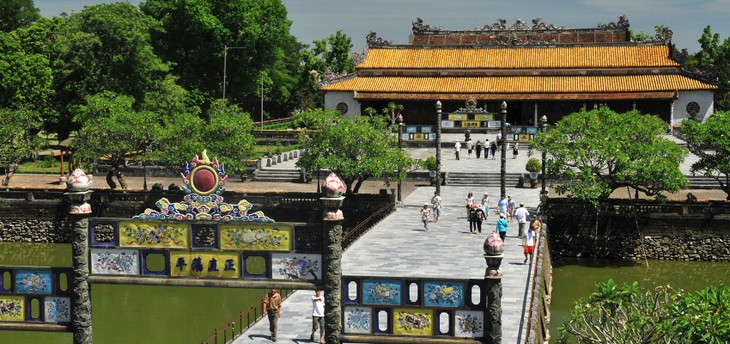(VOVWORLD) - Thua Thien-Hue province is a land of natural, cultural, and historical heritages, including 7 tangible, intangible, and documentary heritage titles recognized by UNESCO. Hue, the capital of Thua Thien-Hue province, intends to become a centrally-managed city focused on preserving its ancient heritage and culture.
 Hue imperial citadel Hue imperial citadel |
The imperial city of Hue has worked hard to preserve Vietnam’s traditions and values, its tangible and intangible heritages, and its environment, lifestyle, and customs. Over the past five years Thua Thien-Hue province has been building two trademarks: “Vietnam’s Festival City” and “Cultural City in ASEAN”.
A resolution of the Party Politburo on developing Thua Thien-Hue by 2030, with a vision to 2045, stresses the importance of preserving Hue’s ancient heritage and culture and making tourism a spearhead sector.
Le Truong Luu, Secretary of the Thua Thien-Hue provincial Party Committee, said: “The guidelines for developing Thua Thien-Hue by 2030, with a vision to 2045, include specific goals and actions. There is a global trend toward developing green, innovative, sustainable cities based on heritage. Hue will promote its advantages and strengths to keep up with this trend.”
Thua Thien-Hue plans to expand the area of Hue city five-fold to approximately 350 km2 by 2030. The expansion will incorporate Huong Thuy town, Huong Tra town, and part of Phu Vang district. Thuan An beach and Tam Giang lagoon will be connected to the city.
Phan Thien Dinh, Vice Chairman of the Thua Thien-Hue provincial People’s Committee, said: “To implement the Politburo’s resolution on Hue’s development, we must set specific socio-economic targets for a heritage city.”
Hue’s development plan will protect its relic and heritage sites while conserving its natural environment to become an urban area with unpolluted air, land, and water.